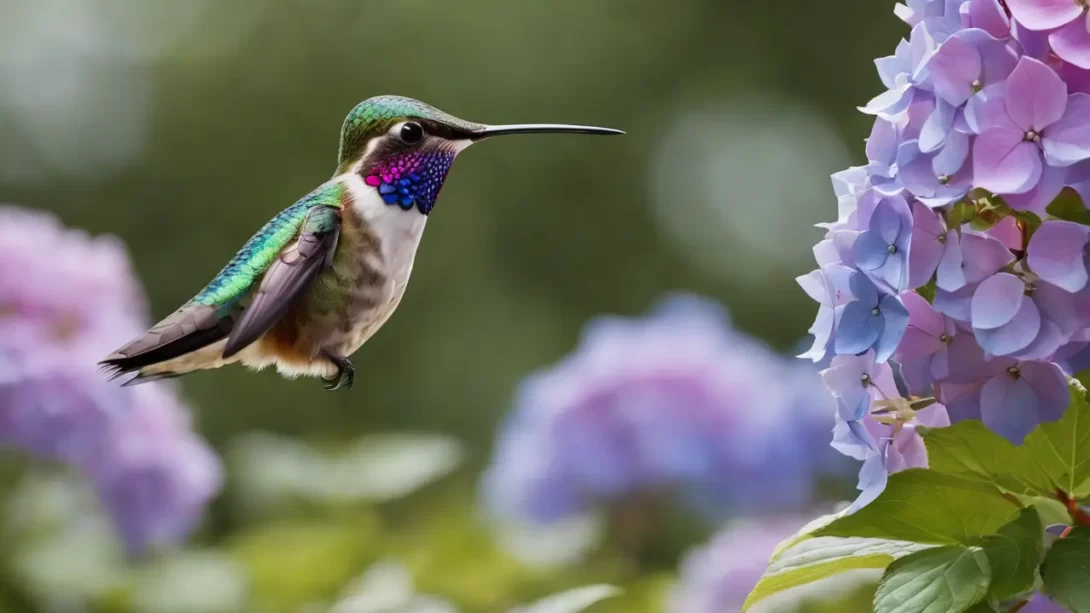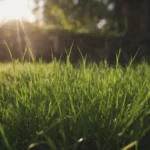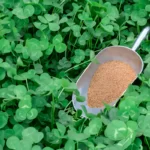Hummingbirds, with their iridescent feathers and rapid wing flaps, are a delightful sight in any garden. These tiny birds are known for their preference for certain types of flowers, especially those rich in nectar. Among the various flowering plants, hydrangeas stand out for their lush blooms and vibrant colors. This article explores the relationship between hydrangeas and hummingbirds, examining whether these popular garden plants attract these charming birds.
Hummingbirds
Hummingbirds primarily feed on nectar, a rich source of energy that supports their high metabolism. They are attracted to flowers that provide ample nectar and are easily accessible. The color of the flower also plays a role; hummingbirds are particularly drawn to shades of red and pink. Additionally, the shape of the flower can influence their preference, with tube-shaped flowers being particularly appealing as they accommodate the birds’ long beaks and allow easy access to nectar.
Characteristics of Hydrangeas
Hydrangeas are well-loved for their large, showy blooms that come in various colors, including blue, pink, purple, and white. They typically flower in early summer to late fall, depending on the species. Hydrangeas can be categorized into several types, such as mophead, lacecap, and panicle, each with distinct bloom shapes and styles. While hydrangeas do produce nectar, the amount and accessibility can vary among the different types. Understanding these characteristics is key to assessing their potential appeal to hummingbirds.
Hydrangeas and Hummingbirds: The Attraction
The relationship between hydrangeas and hummingbirds is not as straightforward as with other nectar-rich flowers like salvia or trumpet vine. While hydrangeas are visually striking, their nectar production and flower structure are not the most conducive for hummingbirds. However, this doesn’t mean that hummingbirds never visit hydrangeas. They may occasionally be seen around hydrangeas, especially if other more preferable nectar sources are scarce in the vicinity. The large blooms of hydrangeas can also attract insects, which are another food source for hummingbirds.
Enhancing Hummingbird Attraction in Gardens
For gardeners looking to attract hummingbirds, incorporating a variety of plants that are known to be favorites of these birds is key. While hydrangeas can be part of this garden, including other flowers with higher nectar production and more accessible flower shapes will significantly increase the likelihood of hummingbird visits. Plants such as bee balm, columbine, foxglove, and lupine are excellent additions. Additionally, incorporating feeders filled with sugar water can provide a reliable food source for hummingbirds.
Hummingbird-Friendly Garden Practices
Creating a hummingbird-friendly garden goes beyond just planting the right flowers. It involves cultivating an environment that meets the birds’ various needs. This includes:
- Providing Natural Shelter: Ensuring there are trees or shrubs where hummingbirds can rest and take cover.
- Avoiding Pesticides: Chemicals can be harmful to hummingbirds and their food sources. Opting for natural pest control methods is crucial.
- Offering Water Sources: Including a birdbath or a fountain with a gentle spray can provide hummingbirds with a place to bathe and drink.
Hummingbird-Friendly Garden Practices (Continued)
- Avoiding Window Collisions: Hummingbirds are prone to collisions with clear glass. Placing feeders and flowers away from windows, or using decals on windows, can help prevent these accidents.
- Consistent Maintenance: Regularly clean and refill hummingbird feeders to prevent the spread of disease among these delicate birds.
- Creating a Diverse Plant Landscape: Including a variety of flowering plants that bloom at different times ensures a steady supply of nectar throughout the seasons.
Conclusion
In conclusion, while hydrangeas may not be the top choice for hummingbirds, they can still play a role in a hummingbird-friendly garden. Their large, colorful blooms add beauty to the landscape and may occasionally attract these birds, especially if complemented with more preferred hummingbird plants. To create a truly inviting environment for hummingbirds, it’s important to include a variety of nectar-rich flowers, maintain natural habitats, and provide safe and clean water sources.
Gardening with hummingbirds in mind is a rewarding experience, offering a chance to observe these fascinating creatures up close while contributing to their conservation. By implementing the practices outlined in this article, gardeners can enjoy the dual benefits of a vibrant garden and the delightful presence of hummingbirds. Remember, the key to attracting wildlife is to provide a diverse, natural, and safe environment that caters to their needs throughout the year.



